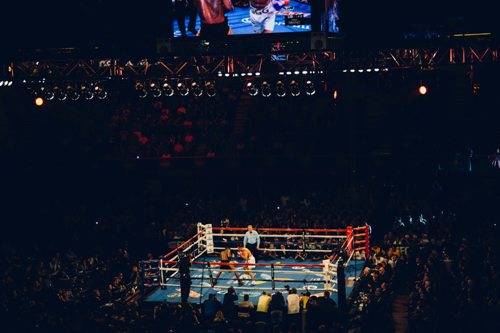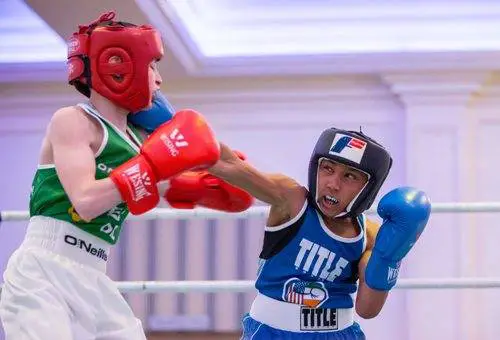
Why is boxing called the sweet science? This question has been around for decades, so if you are curious about the term “sweet science”, we have released a paper that helps clarify your wonder. Flip through the end so that you can grasp a more in-depth outlook on this kind of sport.
Contents
Why Is Boxing Called The Sweet Science?
Non-fans usually consider boxing involving solely matches of two fighters beating each other. Meanwhile, boxing-addicted watchers see this sport differently, and we do think it is a commendable perspective.
The story is neither about thrashing opponents nor about winning the game, but the fighters’ observations on their opponents’ making any move or defensive responses towards the enemy attack. The fighters call boxing a special name, “sweet science,” when one side gets hammered, and the other side eventually wins.
However, why is boxing called the sweet science? The reason behind this term’s existence is that fighters need to be brutal, tactical, and capable of anticipating their opponents’ offensive actions. The feasibility of any occurrence during a match involves science and logic; thus, boxing has its “sweet science” name.
“Sweet science” has been popular among not only the media but also boxing analysts. Some consider it a running joke because they suppose a fighter’s win depends more on his instincts and techniques than on science. In contrast, fighters take it seriously to train hard and perfect their skills.
Where This Term Came From?
In 1813, Pierce Egan, a British sportswriter, was the very first person who coined the term “sweet science” to describe how scientific a fighter needs to be in his approach. Preparing feasible strategies before the match is a must so that the fighters can defeat their challengers speedily and persuasively.
What Are The Styles of The Sport?

There are typically four common terms used by Moffa to describe a boxer; they are:
- “Boxer-puncher” who performs hand or punching speed combined with the practice of slugger-type power and defensive skills
- “Slugger” who uses less complex combinations; rather, forceful shots with fewer throws
- “Out-boxer” who tends to maintain a gap from his challenger and unleashing speedier, longer-range punches
- “Swarmer” who exercises constant pressure to have his opponent finally overpowered
At the same time, many experts classify the boxing styles into three main categories: inside fighter, brawler, and outside fighter.
#1. Inside Fighter
According to Sayer, these inside fighters always attempt to create as much close gap with their opponent as possible. Concurrently, they take advantage of angles and turns to make their attack more unpredictable, putting the opponent into a passive situation. The fighter ultimately wins as he throws an intense, savage punch like uppercuts or hooks.
#2. Brawler
Although brawler seems to require fighters with fewer techniques, it attracts many people thanks to its power-involved and please-given tactic. Brawlers tend to apply simple punches once or two times to counteract an insufficiency of foot mobility. Then, they accept to take one hit in exchange for giving a hit. People name this strategy a nuanced defense approach.
#3. Outside Fighter
Sayer has added some in-depth explanations when it comes to an outside fighter style. He said that these fighters tended to be tall and have long limbs. However, boxers are shorter but possess good footwork, and extensive knowledge about the range can fight from the outside.
Muhammad Ali is an outstanding outside fighter who employed a chaste boxing style and kept his close distance. Then, he threw fast, long-range punches to finish off the match.
What Are The Techniques of This Sport?
#1. Offensive Techniques
Right Cross
The “right cross” technique is often an advantage of those who possess the powerful right-handed punches. These fighters feint their opponents with a left jab, then unleash the right fist before reaching the mark. At the same time, they have their bodies twisted to the left and swivel the rounded part of their right feet at the toes’ base.
Left Jab
The boxer straightens his left elbow sharply to throw a left jab, better protecting him than any other type of punch. This jab can be useful to obstruct strikes from the opponent.
Left Hook
Throwing a good left hook is not easy; rather, it requires first-rate timing skills and excellent techniques. In a jab position, start with the left arm to throw a punch, then strike out the hand at the middle of a blow and circle the punch in an arc.
Uppercut
It would be best to perform the uppercut right after the boxer uses a good jab. The punch movement will start from the fighter’s waist and then finish at the point of the opponent’s chin.
Combinations
Combination punches involve a sequence of strikes produced in quick succession. The fighter usually executes this technique through a burst of different blows variably changed at the other angles, like a left jab by a right cross or an uppercut.
Feints
Feinting technique is about baffling the opponent by moving the fighter’s head or hands quickly. Some skilled boxers attempt different feints to test their challengers.
#2. Defensive Techniques
Infighting
Getting close to the opponent and releasing a quick, choppy punch toward his body or face form an infighting technique. The remaining gap between the two fighters helps prevent long-range strikes from the opponent. Otherwise, the match will ultimately end with one side’s knockout. This approach is particularly workable for those who have a short reach.
Elusiveness
Another helpful method is keeping the most vulnerable body parts squeezing and the feet steady while fighting. The boxer maintains the side-to-side movement of his head and keeps his body in motion. If not, he will become a stationary target that gets hammered easily.
What Equipment Needed For The Fight?
#1. Hand Wraps or Wrist Straps
We suggest you wear wrist straps or hand wraps when hitting sparring bags to help avoid any wrist or knuckle injuries. Besides, you can wrap your hands with 120” wraps or even 180” ways.
#2. Boxing Shoes
If you want to hold the ground without sliding, do not forget to prepare a pair of lightweight, high-top boxing shoes engineered with the understanding that footwork is a prime element in boxing.
#3. Protective Gear

Alongside hand wraps and boxing shoes, you also should minimize your clothes while fighting so that you can move freely. Therefore, protective gear, including mouth guards and headgear, is a must to shield the most delicate parts of your body from crippling.
What Are The Strategies Of Boxing?
There are three main boxing strategies considered viable for fighters to apply during their match. The first tactic is the fighter should control the pace with the opponents.
The second one is to locate his advantage angles. And the last strategy of boxing is to time a counter or an attack. However, you need to test and figure out which tactic works best for you.
We have a recommendation for beginners that they should not count on complicated strategic moves. Instead, these fighters should follow four simple steps: turning up in good shape, having your hands kept lifting, using straight punches, and avoiding backward moves. When your skills are in progress, you can start combining more than two techniques to evolve your game plan.
After boxing players train to perfect their style, the closing step examines their rival’s style to counter and conquer the match more cleverly. People consider strategy as the blueprint for beating the opponents.
In comparison, players devise techniques for a well-prepared game and train hard to achieve specific goals. Fighters often practice shadowboxing via punches; after that, utilize their counters, footwork, and pacing to react to shots thrown at them.
Lastly, we do think you should do full-body workouts at least three times per week to shape your muscles evenly, helping you overcome any intimidated feelings from the outset. After that, you can be confident to move on to develop technicalities and enhance your mental and physical capacity.
Also read: Why is boxing called boxing?
Final Verdicts
After finishing our paper, we hope that you can have your answer to the question of “Why is boxing called the sweet science?”. If you have any doubts about boxing, please feel free to reach us by commenting in the box below. We promise to try our best to reply to your concerns.

With a passion for combat sports and a wealth of experience, Mike Colon stands as a seasoned figure in the world of martial arts, hailing from the vibrant city of Las Vegas, Nevada. Mike has honed the skills of numerous fighters, guiding them through the intricacies of the sweet science of Boxing and the multifaceted challenges of MMA.


